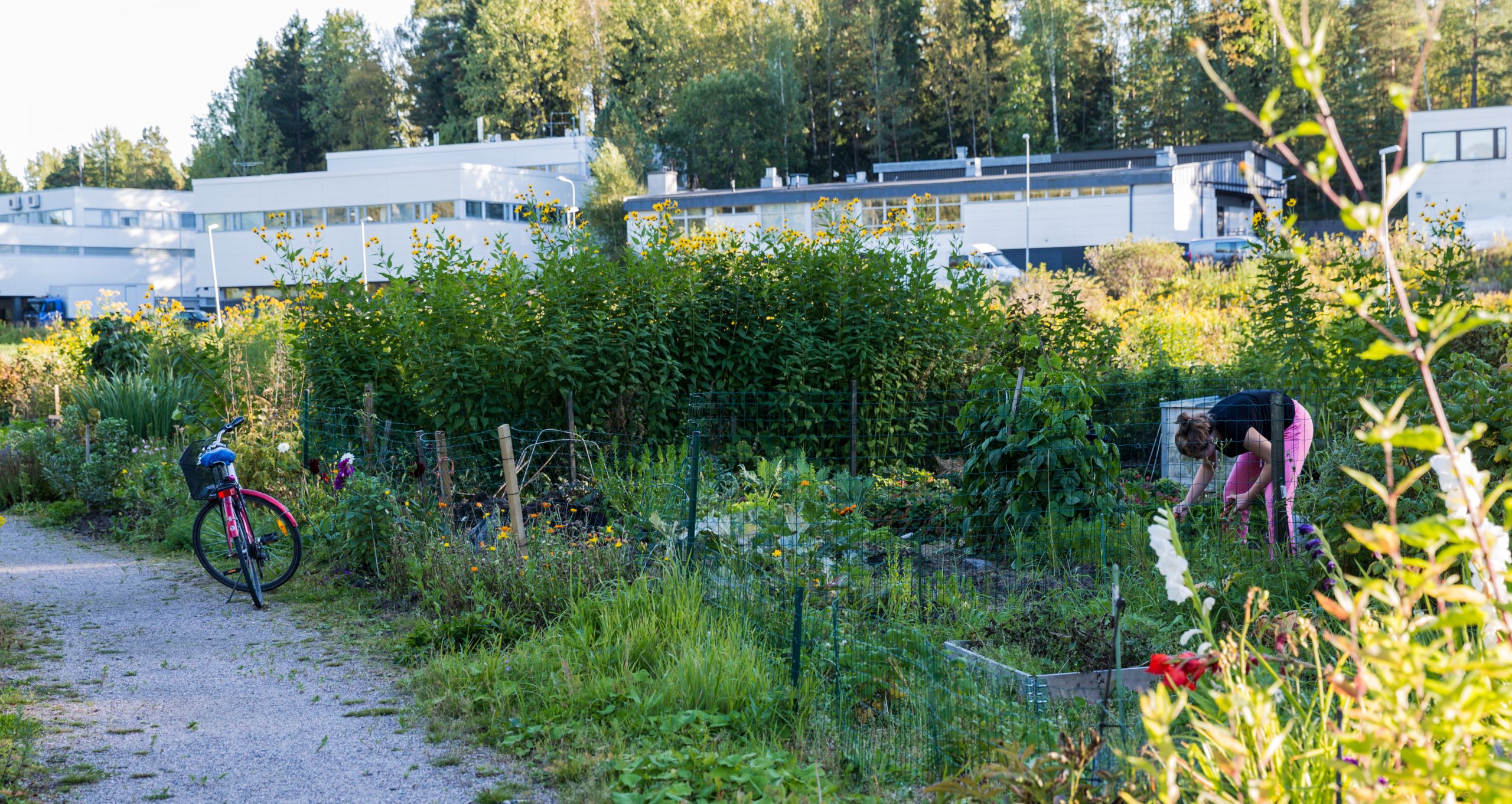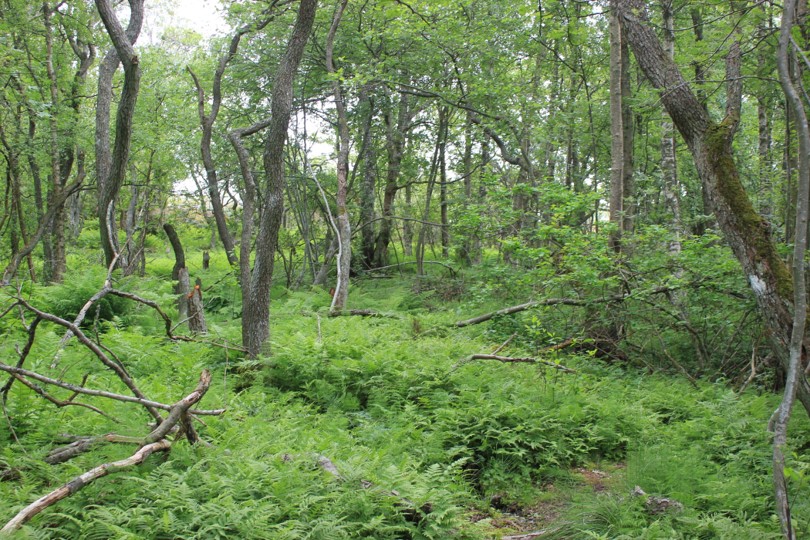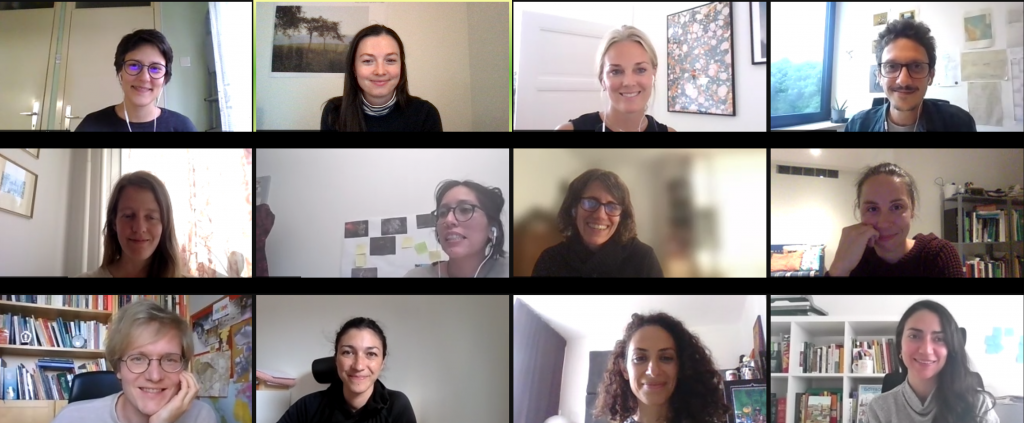Katri Mäkinen-Rostedt
Transdisciplinary research is strongly promoted by many funding bodies and science-policy interfaces such as the EU Horizon 2020 projects, the Nordic Council, the Academy of Finland Strategic Research Council, the Intergovernmental Science-Policy Platform on Biodiversity and Ecosystem Services (IPBES), and Future Earth. In a few words, transdisciplinarity means integrating disciplinary boundaries and including non-academic stakeholders in research processes. The ways and the timing of stakeholder inclusion, or engagement, in research projects vary. Co-production of knowledge is often used as one method of engagement between academics, different disciplines and/or non-academics in transdisciplinary research projects.
Not all collaborative co-production of knowledge projects are transdisciplinary, though. In addition, these two concepts are sometimes used interchangeably, which adds to the confusion. Both transdisciplinarity and co-production of knowledge as modes for collaborative research aim to break the traditional, linear relationship between the knowledge producers (researchers) and knowledge users (”non-academics” like practitioners, society at large, and decision-makers) so as to better align knowledge and action and to support a more engaging research culture in general. In the field of natural resources management, both transdisciplinary research and co-production of knowledge are often utilized because they are assumed to have the potential to link research and societal impacts more effectively than conventional research modes. Forming common goals, co-learning throughout the process, and adding understanding among a plurality of actors are considered to strengthen the link between knowledge and action and create more comprehensive knowledge of complex problems. Transdisciplinarity and co-production of knowledge are thought to help transform the management and governance of natural resources in a more sustainable direction.
As a political scientist, I am interested in finding out how co-production of knowledge defines the knowledge that is ultimately used in decision-making and who is involved in these co-production processes. During my visit to the Human-Nature Transformations Research Group in spring 2021 I worked on two different articles. One is a collaborative literature review on different ”co-concepts” (co-design, co-production of knowledge, co-creation, co-learning, and co-management). The other is an analysis of longitudinal data collected among Intergovernmental Science-Policy Platform on Biodiversity and Ecosystem Services (IPBES) experts’ values and understandings during their involvement in the IPBES Methodological Assessment regarding the Diverse Conceptualization of the Multiple Values of Nature and its Benefits, including Biodiversity and Ecosystem Services (hereafter the Values Assessment). Even though the two projects are different, a common denominator is discerning co-production of knowledge as a collaborative mode in transdisciplinary research projects.
Just like transdisciplinary research, co-production is also a popular concept both for theorizing usable knowledge and for practicing engagement in transdisciplinary natural resource management projects. During our literature review project we noticed, however, that despite its popularity, or maybe because of it, co-production of knowledge has multiple definitions, expectations, and interpretations in the literature, and at times was even left undefined or used as a mere ”buzzword”.
Most commonly the definitions of co-production are anchored to
- the unique and process-like nature of the co-production act, where knowledge is not the only relevant outcome (other outcomes might be, for example, collaborative learning) and
- the engagement of diverse actors, including those outside academia.
In my review I was able to pinpoint finer nuances in the concept definitions. I categorized four definition variants for co-production of knowledge definitions used in natural resource management literature, depending on their different scopes of (transformative) ambition, the role of non-academics, and the intended use of the knowledge co-created. These variants were: i) Outcome-Oriented, ii) Practical & Pragmatic, iii) Empowering and iv) Transformative (explained in detail in Table 1).
Table 1. Variants of co-productions of knowledge. (Table from Hakkarainen, V., Mäkinen-Rostedt, K., Horcea-Milcu, A., D’Amato, D., Jämsä, J. and K. Soini, 2021. Transdisciplinary research in natural resources management: towards an integrative and transformative use of co-concepts. Manuscript submitted for publication in Sustainable Development.)
| Variants |
1) Outcome-oriented |
2) Practical & pragmatic |
3) Empowering |
4) Transformative |
| Promises |
Better understanding of data and natural resource monitoring. |
Rationale is to increase the relevance, scope, and usability of science, hence building adaptive capacity. |
Creating partnerships that lead to better environmental management. |
Better understanding and democratic management of natural systems by developing synergies across knowledge systems.
|
| Role of non-academics |
Informants |
Stakeholders |
Partners |
Co-researchers (often indigenous and local people) |
| What kind of co-production? |
From knowledge transfer to sharing. Actors are valued more as implementers of research outcomes (not because of their knowledge). |
Co-production as skill-dependent activity that prevents bias and adds co-ownership (of knowledge). |
Everybody involved as equal partners and co-producers of knowledge. More bound in certain time and scope than transformative (4.) |
Appreciating different knowledge systems and embracing epistemological differences. Linking co-production with political (human rights, indigenous claims etc.). |
Understanding the differences between these views and the meanings they create for collaborative work is essential for delivering the goals of the collaboration. As Table 1 presents, these different views and meanings also influence how the collaboration is actually acted out in practice: what is the timing, the level of methodology and above all, the level of knowledge integration. These results from the conceptual review are aligned with the analysis of IPBES experts’ values and understandings during the Values Assessment. In the first research project using one of the datasets collected during this three year series of surveys among IPBES experts found that underlying assumptions about valid knowledge and how it is created differ among experts and even within disciplines (Hakkarainen et al. 2020). Epistemological and ontological assumptions might have implications for the knowledge that is created in the assessment processes. Now, we are trying to determine whether experts’ definitions and assumptions have changed during the IPBES process and if so, what in this inter- and partly transdisciplinary process has caused the change. It is interesting to see how intensively co-production of knowledge is enabling learning together, understanding each other’s viewpoints, and building personal capacity and skills for inter- and transdisciplinary research.
Conscious design, facilitation, and practice are essential in transdisciplinary and co-productive processes. Understanding the plurality of viewpoints that ultimately represent the values we hold related to knowledge, who creates knowledge, and where knowledge is used influences the deliverables of transdisciplinary projects (Table 1). Ultimately, plurality of viewpoints is connected to the decisions on which types of knowledges are taken into account in decision-making and in society at large. We need to enhance conscious considerations of the roles of epistemological, conceptual, and value pluralism in creating tensions among academics – not just between academics and other actors. For this reason, transdisciplinary projects aiming to create knowledge together should dedicate more time to discussion, making values and assumptions explicit, and figuring out different viewpoints and disagreements between participants. These kind of reflections and learning exercises should be carried out throughout the project to ensure the project’s goals are in line with the context, norms, values, resources, and capacities.
References and more information:
For more on co-production of knowledge see, e.g.:
Miller, C.A., Wyborn, C., 2018. Co-production in global sustainability: Histories and theories. Environmental Science & Policy. https://doi.org/https://doi.org/10.1016/j.envsci.2018.01.016
Norström, A.V., Cvitanovic, C., Löf, M.F., West, S., Wyborn, C., Balvanera, P., Spierenburg, M.J., Putten, I. van, Österblom, H., 2020. Principles for knowledge co-production in sustainability research. Nature Sustainability 3, 182–190. https://doi.org/10.1038/s41893-019-0448-2
For more on IPBES as an inter- and transdisciplinary space see, e.g.:
Borie, M., Mahony, M., Obermeister, N. and M. Hulme, 2021. Knowing like a global ecpert organization: Comparative insights from the IPCC and IPBES. Global Environmental Change, 68 (May 2021). https://doi.org/10.1016/j.gloenvcha.2021.102261
Hakkarainen, V., Anderson, C. B., Eriksson, M., van Riper, C. J., Horcea-Milcu, A., and Raymond, C. M., 2020. Grounding IPBES experts’ views on the multiple values of nature in epistemology, knowledge and collaborative science. Environmental Science and Policy, 105 (November 2019), 11–18. https://doi.org/10.1016/j.envsci.2019.12.003
This writing and Table 1 were based on the joint article of Hakkarainen, V., Mäkinen-Rostedt, K., Horcea-Milcu, A., D’Amato, D., Jämsä, J. & K, Soini, 2021. Transdisciplinary research in natural resources management: towards an integrative and transformative use of co-concepts. Manuscript submitted for publication in Sustainable Development.
About the author
In spring 2021 Katri Mäkinen-Rostedt spent four months in the Human-Nature Transformations Group as a Senior Project Manager. She worked, e.g. with IBPES-related research project on expert’s understandings on multiple values of nature and supporting the group with project planning activities. She is also a PhD Candidate at Tampere University. Her PhD project concerns the use and construction of expert knowledge in global environmental governance. Her current interests include social network analysis and various knowledge creation practices (such as co-production of knowledge) used in different international and regional science-policy interfaces. You can follow Katri on Twitter or ResearchGate.







